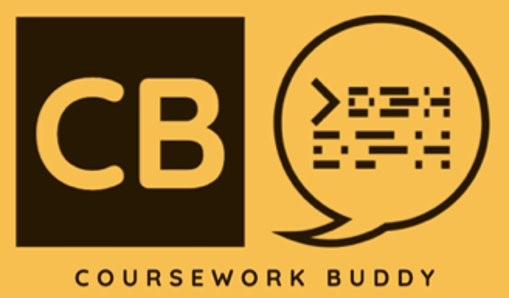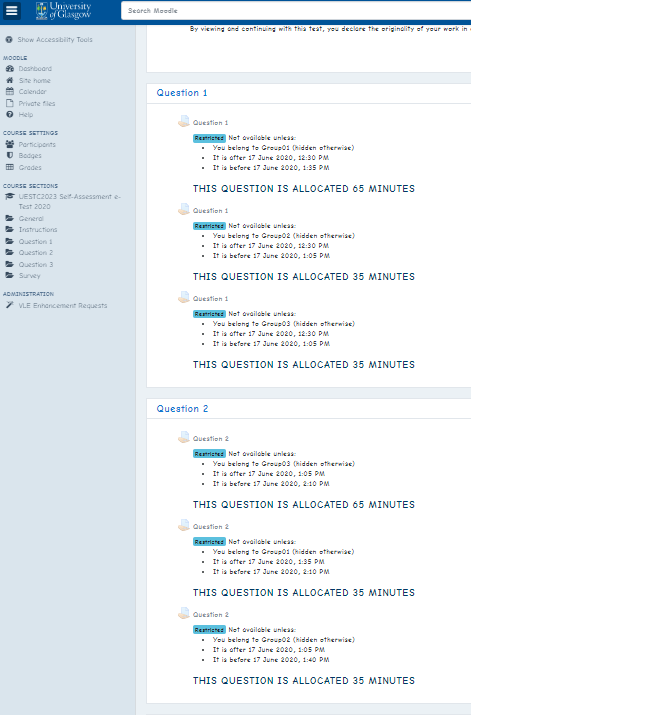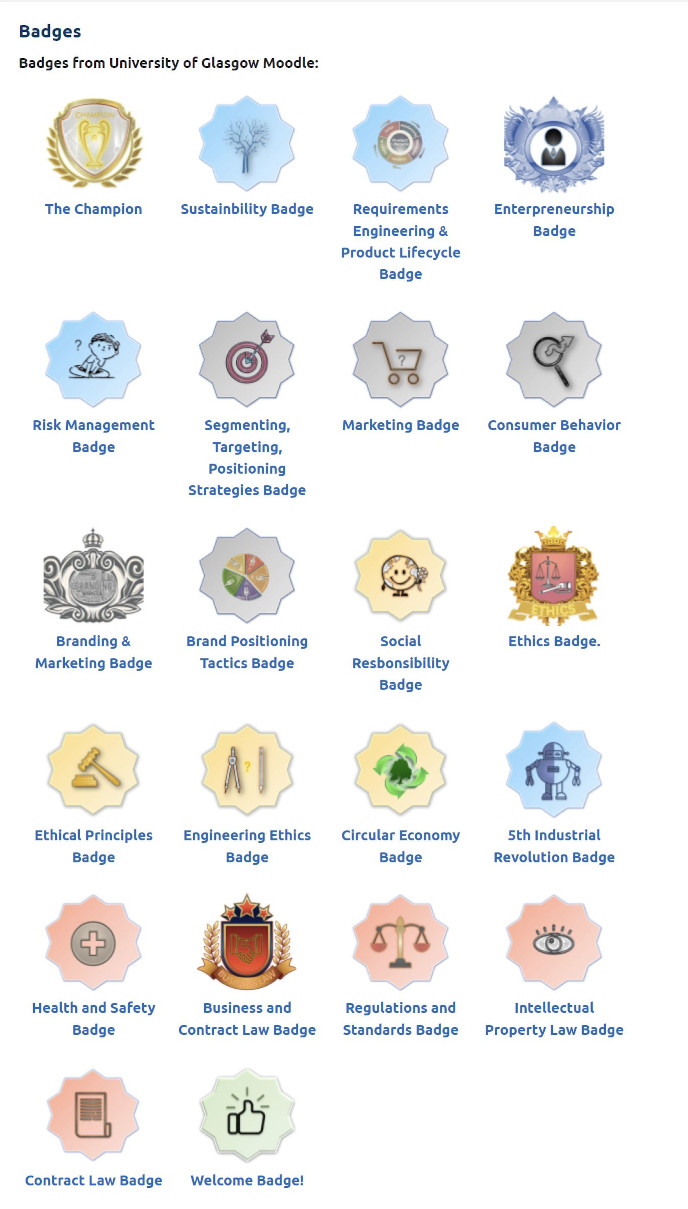Learning and Teaching Themes
Learning and teaching staff in the Centre for Educational Development & Innovation work on projects focusing on a wide range of topics, and these can be summarised by the themes categorised below
- Educational Technology
- Assessment and Feedback
- Student Experience and Engagement
- Learning and Teaching Policy
- Quality Assurance
- Engineering Education
- Transnational Education
Current Projects
Coursework Buddy
Principal Investigator
Project Summary
The project involves development of a chat bot for lab and coursework assignments. The chat bot application will be customisable with instructor’s coursework and/or lab assignment. It will also explore integration of the system with teaching frameworks for different subjects. Students will be able to interact with the chat bot to determine the requirements of the coursework/assignment. The chat bot will be able to represent the information that is frequently provided to students. For new questions that the bot cannot answer, it will query the instructor and update the conversation model.
Key Objectives
- Development of a chat bot for lab and coursework assignments.
- A chat bot application, customisable with instructor’s coursework and/or lab assignment.
- Publication of technology and feedback from students and instructors.
More updates will follow shortly on this exciting project - including screenshots of its interface.
Fostering Student Collaboration and Protecting Students' Ideas: A Blockchain-based Platform
Principal Investigator
Project Summary
The project will develop a blockchain based data sharing platform to benefit the learning and teaching environment at the University of Glasgow by:
- Protecting students’ intellectual properties (IPs)
- Promoting collaboration by allowing students to cooperate and share assignments (in particular for teamwork assessments where a lot of discussions/interactions are involved) in a controllable and private manner.
- Being capable of detecting plagiarism when it occurs.
Outcomes are expected to be tested first in the School of Engineering and the Glasgow College UESTC, but can later on be extended to other disciplines and schools across the university.
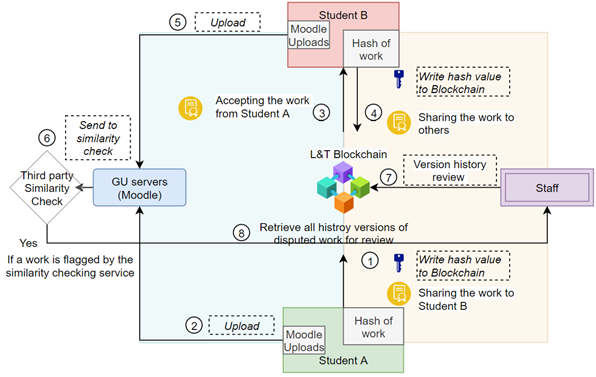
See a short video illustrating the project here:
Gamifying Electronics Engineering Labs
Principal Investigator
Co-Investigators
Dr Olaoluwa Popoola and Dr Shuja Ansari
Graduate Teaching Assistants
Rory Nesbitt and Chen Yuan
Project Summary
The aim of this project is to develop a software-based game for Years 1 and 2 lab-based UESTC electronics-related modules that takes the student through the lab exercises that they are meant to undertake in the physical face-to-face laboratories. The idea is to develop a platform where students can have fun learning and engage with the labs prior to attending them. The game will involve a Graphical User Interface (GUI) where the students can choose the module they are enrolled in and a series of lab exercises matching the students’ lab manuals. The complexity of the game will vary based on the module level and the actual lab exercises.
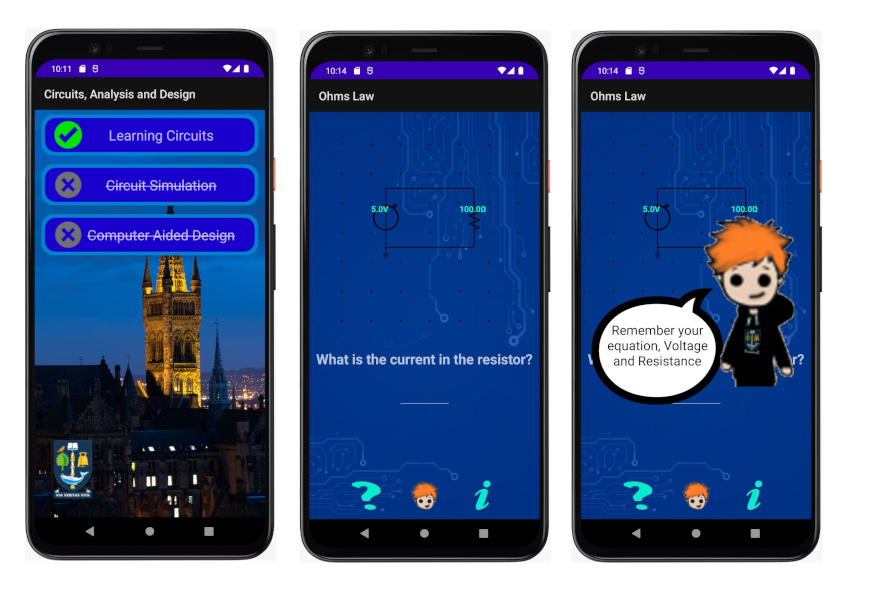
Sreenshots from the game are shown above: the homepage, a quiz question, and an answer 'hint' on Ohms Law.
We will report further as the project advances, including significant findings and outputs.
Getting Access to AI When Learning Programming
Principal Investigator and Co-Investigators
Dr Bo Liu with Dr. Rami Ghannam and Professor Muhammad Imran
Teaching assistants
Mr. Yushi Liu, Miss. Yijia Hao
Project Summary
This project aims to teach fundamental AI knowledge to first-year students who just learned to program. It has 3 lectures and exercises. The students have learned the basics of evolutionary computation and machine learning and applied the AI algorithms with MATLAB toolboxes. Very positive feedback has been received.
Video
More updates will follow shortly on this exciting project - including a published paper
Completed Projects
e-Examinations
Principal Investigator
Objective
Conducting online end-of-term final examinations in a near-controlled environment
MOTIVATION AND BENEFITS
Although we are facing challenging times, it is desirable to run the end-of-term assessments / examinations in a controlled environment around the actual schedule to allow students’ progress normally with no delays in their careers. It is obvious that students would not be able to come aboard campus to sit their end-of-term assessments / examinations physically in a controlled environment for the foreseeable future. Therefore, the need for having an online environment for the same is at peak. Keeping this motive in mind, it is not straightforward to design alternate e-solution(s) for end-of-term assessments / examinations within a controlled environment. An easy approach taken over the past semester by the majority Schools was having 24-hours open-book online/electronic(e)- examinations. Although this seemingly works, it opens-up venues for open-discussions among exam-takers. Hence, unlimited, and undesired peer-to-peer (P2P) learning might take place within this given 24-hour time-window. To overcome / minimise this undesired and unlimited P2P learning during end-of-term assessments / examinations, we design the same considering two major conditions to address and provide a near-controlled environment.
APPROACH
Firstly, we design our online assessments / e-examinations to be strictly timed. Specifically, all the questions appear sequentially in a timed manner i.e. each question appears for a given time-window and disappears / disables once their allocated duration times-out. Although with this restriction the students' do not have the opportunity to re-visit any particular question, this minimises the undesired effects of P2P learning during the end-of-term online assessments / e-examinations thereby providing a near-controlled environment assessment / examination. We applied this to our scenario as follows. The majority of our courses are standardised in terms of their format i.e. there are four questions in total, each weighting 25% of the total end-of-term assessment / examination. In normal conditions, each of these four questions is designed to be read and solved by the exam-takers in 30 minutes (mins.) thereby totaling the duration of the complete end-of-term assessment / examination to two hours. Hence, the aim with this timing restriction is to allow 30 mins. for each question to be read and solved with an additional 5 mins. for uploading the solution scripts. Once these 35 mins. lapse, the active question times out and disappears / disables. Subsequently, the next question appears for the following 35 mins. This leads to a sub-total of 35 mins. per question thereby totaling the complete end-of-term online assessment / e-examination to 140 mins. or 2 hours and 20 mins. maximum.
We successfully applied this restriction to one course that had three questions (instead of four) as part of its end-of-term assessment / examination with one question contributing towards 50% of the total weight i.e. requiring 60 mins. of duration to read and solve. Hence, note this restriction is equally applicable to any format of end-of-term assessments / examinations with respect to number of questions and their independent timings / durations.
Secondly, to further reduce the undesired P2P learning during the end-of-term online assessments / e-examinations, the same questions appear in a randomised order to the exam-takers. Specifically, a cohort / class-size of 'X' students is divided into at least 'Y' random groups, where Y is defined as the number of questions in an end-of-term assessment / examination. Hence, an end-of-term assessment / examination constituting of four questions has the exam-takers divided into at least four random groups. Although all the random groups ultimately receive the same four questions of the end-of-term assessment / examination, these appear in random order thereby further minimising the undesired P2P learning. Interestingly, the number of random groups can be scaled up to a maximum of X permutations (i.e. Y = X!) thereby approaching an almost near-ideal end-of-term online assessment / e-examination within a controlled environment.
In Figs. 1 and 2, we demonstrate our end-of-term online assessment / e-examination setup on Moodle virtual learning environment (VLE). Fig. 1 displays a four questions end-of-term assessment / examination equally weighted format with four random groups. Similarly, Fig. 2 showcases a three questions end-of-term assessment / examination unequally weighted format with three random groups. In both these instances, an exam-taker only sees the link to the question that belongs to his/her random group where the group number remains hidden from the exam-taker. As for the exam-setter, they assign each random group a different actual question within any 'Question X' block.
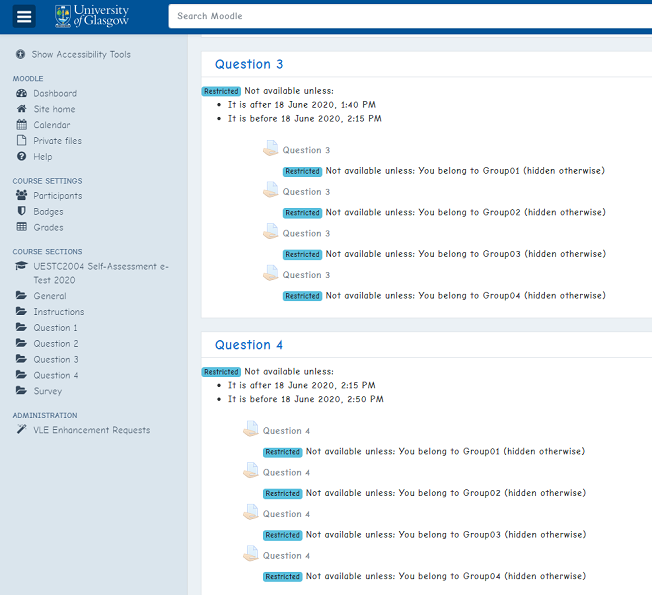
Figure 1: A snapshot / screenshot from the four equally timed questions of an end-of-term online assessment / e-examination depicting the timed and randomised constraints.
Figure 2: A snapshot / screenshot from three unequally timed questions of an end-of-term online assessment / e-examination depicting the timed and randomised constraints.
STEPS TO CONSIDER
1. Divide all students into X (based on number of questions (Qs) in the exam) RANDOM GROUPS.
2. The random groups must be hidden from the participants.
3. Create X separate Assignment type Qs and each Q is timed. So, the Qs get enabled / disabled as per the set timing.
4. Each random group gets Qs in different order.
5. We may as well increase the (pseudo) randomness by having up to X! random groups for an exam of X Qs.
Further Reading
A full write up of this project and its findings is available here:
M. Ur-Rehman et al., "Assessment and Feedback Under Disruptive Circumstances in Trans-National Education," 2020 IEEE International Conference on Teaching, Assessment, and Learning for Engineering (TALE), 2020, pp. 287-294, doi: 10.1109/TALE48869.2020.9368427. https://ieeexplore.ieee.org/document/9368427
e-Marking / Green-Marking
Principal Investigator
Objective
Demonstration of efficient and effective e-marking approaches / solutions.
Motivation and Benefits
- Every semester we print the scanned version of at least 1-sheet of A3 paper per question per student per course. With a student population of around 2000 and on average each student appearing in four different final exams, this amounts to a total of around 32K sheets of A3 paper per semester. This in turn corresponds to around three and a half trees. Hence, e-Marking our final exam scripts will save around an average of seven trees per annum.
- e-Marking will allow academic staff members to mark the final exam scripts from anywhere and at any time thereby speeding up the marking process by at least around 30%.
Approaches
Specifically, two effective and efficient approaches / solutions are identified i.e. formal (Adobe Reader) e-Marking and free-style (Microsoft Edge) e-Marking. Both Adobe Reader and Microsoft Edge are freely available.
Recording of e-Marking Demonstration
Outcomes
Marking on Touch-Pad: Academic staff members were provided an option with easy plug-and-play A3 size touch-pad connectable to their laptops or desktop computers. This touch-pad creates an impression of moving a pen on the laptop / desktop screen while in reality, the user is simply making these gestures on the touch-pad placed in front of him/her. With a mere hand-eye coordination and synchronisation, users were able to perform marking task on the touch-pad with no hard-copy paper i.e. marking directly on the soft / scanned version.
Marking on Touch-Screen Station: Large size (A3 OR A2) touch screens with 3D adjustable stand are setup for marking purposes. Academic staff members may borrow a station for fixed duration to perform the marking / teaching task.
Marking on Touch-Screen Tablet / Foldable Laptop: In today’s technology, touch screen tablets and laptops have become very common and many among the academic staff members utilise these. Hence, touch-screen tablet and/or touch-screen laptop (while folded into a tablet form) were utilised as a marking device. The outcome under this mechanism was exactly like the approaches above.
Automated Marks Recognition: Like how MCQ answer sheets are processed for automated marking, teleform mark recognition software was learned and designed to recognise our specific answer scripts with a very high accuracy recognition with majority handwritings. While utilising typed marks on answer scripts provided near perfect accuracy on recognition, it was shared that staff must try their best to handwrite the numerals as clear as possible.
Exploring Eye Tracking data to Support E-learning
Principal Investigator
Project Summary
In this project we have developed a scalable eye-tracking prototype solution EXECUTE to be employed in an online educational setting to capture and analyse the attention of the individual learners and provide insights to find the underlying mechanisms for the positive learning experience. Covid-19 pandemic has caused unprecedented disruption to education systems all over the world, and remote teaching becomes the predominant model for education delivery. During the delivery of remote teaching, EXECUTE will enable the teaching staff to
- deduce students’ engagement and their underlying characteristic profiles (e.g., strong, struggling, engaging/non-engaging)
- improve the instructional design of multimedia learning and teaching material using gaze-based analytics variables
- early identification of potentially at-risk students for providing them with personalized gaze-aware feedback.
The innovative aspect of EXECUTE is that instead of relying on expensive consumer-grade eye-tracking hardware that normally limits the testing of such solutions in restricted artificial laboratory scenarios, it exploits an inexpensive solution by using students’ cameras on their laptops and mobile devices to infer real-time on-screen eye-gaze locations during remote teaching sessions and any on screen learning activity. EXECUTE is a scalable solution that offers the possibility to perform largescale remote online studies to analyse and evaluate the visual perception from new perspectives, namely that of the teachers, the learners, and their interactions. The designed application is privacy-aware since it runs entirely in the client browser, so no video data needs to be sent to a server and requires the user's consent to access their cameras. We have also proposed an attention score matrix and derived various gaze metrics in conjunction with state-of-the-art ML model to quantify students’ attention while they consume the online learning content. The captured data can also be used to identify behavioural anomalies such as early detection of attention deficit hyperactivity disorder (ADHD).
Video Summary
Impact
Khan, A. R., Zoha, A. , Hussain, S. and Imran, M. A. (2021) EXECUTE: Exploring Eye Tracking Data to Support E-learning. UK&IE EER Summer Event, 9 Sept 2021.
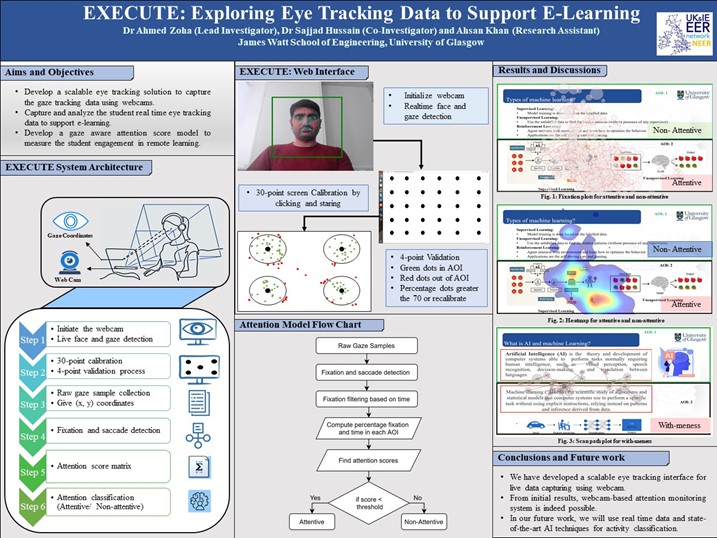
Khan, A. R., Bokhari, S. M., Khosravi, S., Hussain, S. , Ghannam, R. , Imran, M. A. and Zoha, A. (2022) Feature Selection Mechanism for Attention Classification Using Gaze Tracking Data. In: ICECS 2022: 29th IEEE International Conference on Electronics, Circuits & Systems, Glasgow, UK, 24-26 October 2022, (Accepted for Publication)
Khosravi, S., Khan, A. R., Zoha, A. and Ghannam, R. (2022) Employing a Wearable Eye-tracker to Observe Mind-wandering in Dynamic Stimuli. In: 29th IEEE International Conference on Electronics, Circuits and Systems (ICECS 2022), Glasgow, UK, 24-26 October 2022, (Accepted for Publication)
Integrating Robotics in Teaching and Learning to Enhance the Student Experience
Principal Investigators
Dr Guodong Zhao and Dr Wasim Ahmad
Project Summary
The objectives of this project were to (1) provide remote lab access to the students so that they can access the experiment setup anytime from anywhere, and (2) provide our students unique skills/experience of remote working via robot, which would have large demand in future post-pandemic job market. We successfully built the robotic platform using Franka Robot, and embedded the robotics system in UESTC1008 and UESTC2022 courses. More than 200 students used the system in Spring 2021 and 500+ students in Fall 2021. We successfully published a T&L paper at UK RAS conference and a vision paper of Education 4.0 in IEEE Access.
Impact of the Completed Project
This T&L project led to an industrial collaboration with a virtual reality (VR) e-learning company, eComScotland, and we received a highly selective (peer-reviewed external grant) Innovate UK project (SUPERIOR – SUPer-immErsive remote working via Virtual RealIty cOntrolled Robotics, £130k, 2021.4-2021.10). We are in the process of further developing and commercializing our robotics technology in education via the company’s e-learning platform. We expect our robotic technology can be used widely with much better immersive experience.
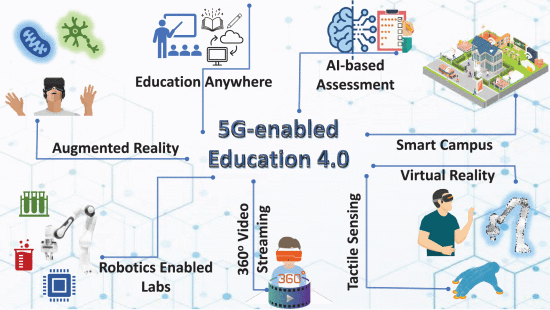
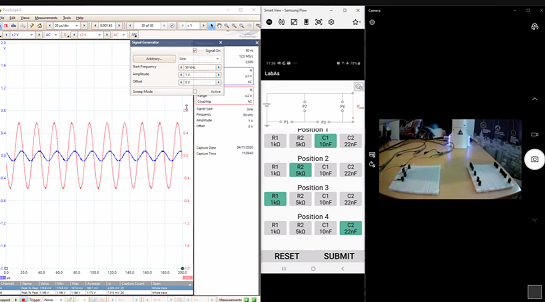
Press coverage and publications
The robotic lab has had a wide range of media coverage, demonstrating the excellence of our TNE programme to external audiences:
https://www.gla.ac.uk/news/headline_801983_en.html
A vision paper of Education 4.0 in IEEE Access (Open Access)
https://ieeexplore.ieee.org/document/9654217?source=authoralert
Learning Enhancement Through Audio-Visual Aids
Principal Investigator:
Project Summary
The aim of this project was to develop innovative figures, animations and videos to aid teaching of core courses on programmes in Glasgow College UESTC and matching courses on the Glasgow campus, as well as the development of a new virtual lab at Glasgow College UESTC.
The teaching materials were designed to support key courses: VLSI Design, Digital Circuit Design and Digital Communications. Diagrams were designed to explain key concepts that students often find difficult to understand. Diagrams were also developed to explain the links between undergraduate concepts and state of art research to help justify the concepts to be learned. In addition to the teaching materials, the figures, animations and videos can be used in different events (learning and teaching workshop and student open days), planned and published online for the benefit of the Glasgow College UESTC students and lecturers.
The figures and videos will not only improve UofG staff teaching materials on the Glasgow College and University of Glasgow campuses, but will be especially important in the delivery of remote teaching – which requires carefully chosen diagrams to aid understanding. The figures and videos were fully customized with a UofG copyright tag. Through these we are able to introduce state-of-the-art teaching and research at the School of Engineering e.g. transistor device nanofabrication at the James Watt Nanofabrication Centre. Furthermore, this project allowed the creation of higher quality recruitment literature for students interested in carrying out postgraduate research at the University of Glasgow.
A further scope of this project will be preparation of 3D figure models where each model could be broken down to subcomponents for enhanced visualisation and therefore better understanding. These 3D models when presenting through VR support will further increase immersive experience. This material complements a previous ‘Self-directed learning through Virtual Reality’ project undertaken by the team.
Objectives
- To introduce engineering concepts and improve understanding and the learning experience with a focus on electronics technology, through advanced audio-visual aids (i.e. diagrams, animations and videos).
- To develop interactive virtual labs to support remote learning.
- To demonstrate school-based facilities such as labs facilities (e.g. James Watt Nanofabrication Centre) and workshops (e.g. computer and mechanical workshops) using immersive 3D models to inspire prospective students.
Demonstration
Learning with IoTs and Wearables
Principal Investigator
Project Summary
This project aims encourage more students to embark on engineering degrees in Glasgow. This will be achieved through a series of workshops, where we encourage teenagers (14-16 years) to design simple electronic systems. The developed material could be used to improve existing teaching curricula at Glasgow College UESTC, particularly our first-year modules. We have identified three main stakeholders for this project. These include (a) high school students participating in the workshops, (b) high schools & their teachers through closer contact and access to improved teaching aids and engineering expertise, and (c) the University of Glasgow directly through the use of teaching materials, and indirectly through greater brand awareness for recruitment.
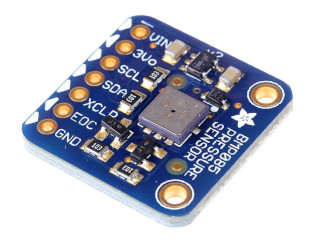
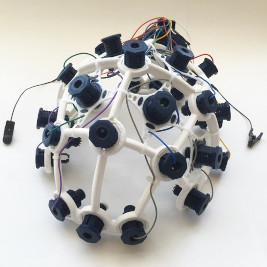
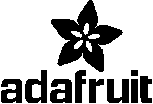

Remote Lecturing Facility
Principal Investigator
Project Summary
With 5 smart boards, a facility has been set up for the staff to remotely engage in the learning and teaching (L&T) activities. These smart boards are connected with the PCs and the internet to support a full range of L&T interactions with students in China. However, the facilities can be used by the University of Glasgow local staff as well to support student engagement in their face-to-face sessions. This facility is extremely useful in case of emergencies if a Glasgow College UESTC staff cannot travel to China. Further, the facility can be used to deliver guest lectures and seminars from eminent University of Glasgow staff for students/staff at Glasgow College-UESTC.
Self-Directed Learning Through Virtual Reality
Principal Investigator
Co-Investigators
Dr Qammer H. Abbasi, Dr Masood Ur Rehman, Dr Hasan T. Abbas
This project enabled students and staff to develop lessons in the Virtual Reality (VR) environment. The platform supports self-directed learning through which the staff and students can co-create the lessons that provide immersive user experience through VR. The lessons had features embedded with self-recorded and external audio/video contents to enhance learning as well as assessment tasks e.g., quizzes and polls to assess student learning. Moreover, branch learning was enabled to customise the student learning experience based on achieved skills and learning performance on a specific task.
This project made students’ learning sessions interesting and memorable by providing them a VR based demonstration of the lab equipment, experiments and critical fundamental concepts. Initially, the proposal focused on courses taught at Glasgow College UESTC, however, it has the potential of being rolled out to various disciplines and programs in the School of Engineering and beyond.
See the technology on which this project was based in action, here:
Links
https://www.gla.ac.uk/schools/engineering/teachinginitiatives/xrcentre/tutorials/
Tutorial as a Tool for Feedback in Large Classrooms
Principal Investigator
Co-Investigators
Professor Muhammad Imran, Dr Sajjad Hussain, Dr Masood Ur-Rehman, Dr Hasan Abbas.
Project Summary
This project is based on the idea of using in-class tutorials as a tool to improve assessment and feedback by involving the students attending a certain course in the preparation of tutorial, its assessment, and a follow up tutorial, based on the class feedback. The framework of the project makes use of past students who attended a course working as graduate teaching assistants (GTAs) to prepare a tutorial and deliver an in-class formative assessment based on the topics covered in the tutorial. This is then used to evaluate students' understanding. Current students provide their feedback on the assessment, identifying the parts that were difficult for them through an online survey and the GTAs then deliver a tutorial discussing these topics in greater detail. The framework is illustrated in Figure 1 below.
This approach not only improves student engagement and learning but also provides them with a unique opportunity to have a tutorial discussing topics of their own choice; thus letting them understand difficult concepts better in a broader class discussion mode and prepare better for the final assessment.
The framework is adopted in three ug courses delivered at 1st, 2nd and 3rd year levels. The effectiveness of the approach is evaluated based on student feedback gathered through an online survey and their performance in the final examination - particularly in the topics that were discussed in the tutorial. Students received it very positively and see it as a good opportunity to improve their learning. The results of a feedback survey on a circuit analysis & design course are given in Figures 2 and 3. It can be observed that an overwhelming majority of the 318 respondents found this approach very useful for the improvement of learning and exam preparation.
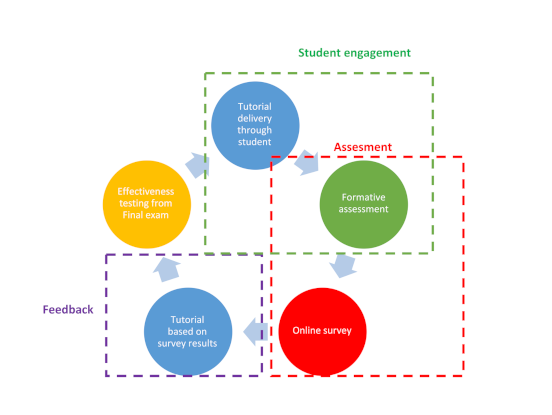
Figure 1. Proposed framework of using tutorial as a feedback tool.
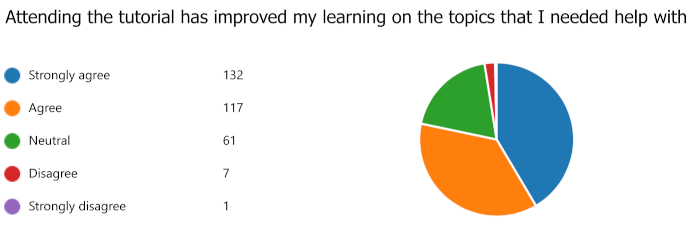
Figure 2. Responses on perceived improvement in learning
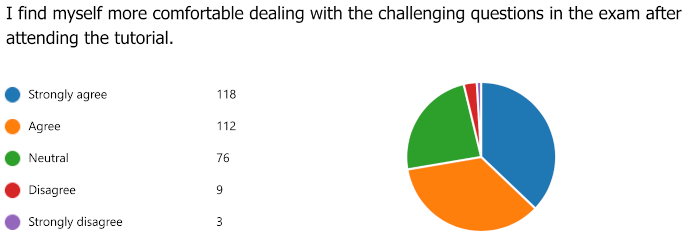
Figure 3. Responses on preparation for exams
These encouraging results show that adoption of this technique at a broader level can improve student understanding, while providing them with enhanced learning experience and satisfaction.
This short video offers some more insights into the project:
Using Digital Badges in Monitoring and Student Engagement
Principal Investigator
Project Summary
The challenges of the 2020-2022 academic era profoundly marked the way we have reflected on existing academic practice in response to a teaching-from-home culture. Furthermore, understanding of learning behaviours and how to motivate learners through feedback while fighting a pandemic, has led to the fast-paced development of innovative pedagogical approaches.
The course 'Engineering and the Law UESTC3030' taught to over 500 students, pioneered an innovative methodology to motivate and engage students in learning methodologically and timeously. The technique relied upon existing technological developments that are often used in Continuous Pfofessional Development and in social platforms that go by the name of 'Digital Badges'.
Much has been covered in the literature about the use of these in an industrial context and to show evidence of skills to employers. This project takes these ideas and implements a different purpose that successfully ensured weekly engagement of student learning and ease of monitoring of the same learning experience by a team of academics.
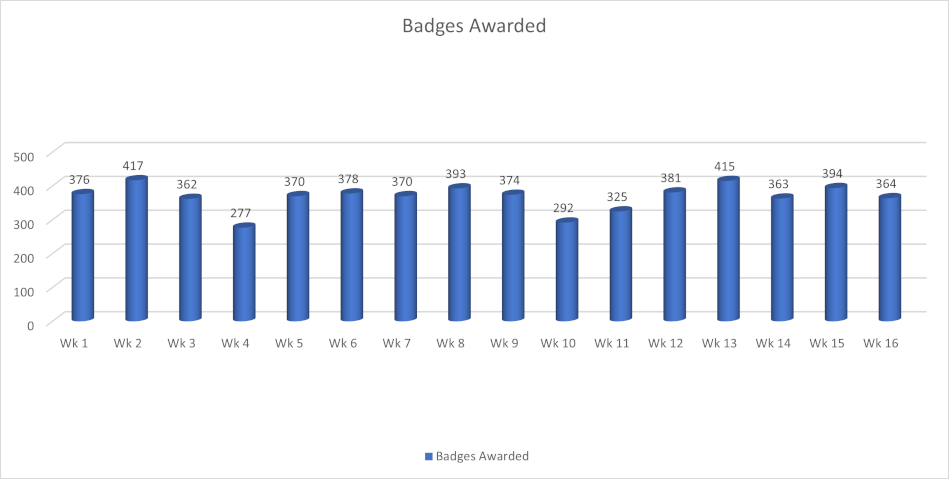
Feedback from a student: “…aroused the enthusiasm and gave me a sense of achievement.”
Feedback from a Graduate Teaching Assistant: “The badge system motivated students and made them more excited to complete learning tasks, possibly because of the satisfaction of receiving the badge.”
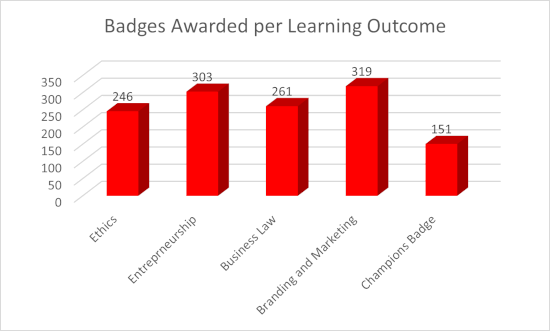
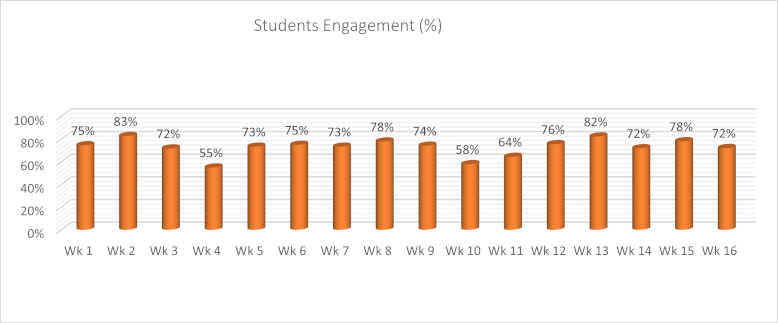
The video below covers the process from the problem definition to its evaluation.
Video
Presentation
VITALISE (VIrTuAL training of reSearch cEntres)
Principal Investigator:
Co-Investigators:
Guodong Zhao, Qammer H. Abbasi, Hasan T. Abbas, Hadi Heidari
Summary
The pandemic has disrupted every field of life over the year and a half. Education is one of the affected sectors, however, technology has proven to be the saviour in unprecedented circumstances and has kept the educational activities going. The use of technology is expected to be part and parcel of future education systems. Aligned with the prospects, this project will explore the use of technologies to provide immersive experience to remote learners.
This project is about providing an immersive experience of the state-of-the-art research facilities and the training to the students of cutting-edge equipment available at the James Watt School of Engineering (JWSE), University of Glasgow (UofG). Our target audience is both undergrad and post grad students who cannot access these facilities under normal circumstances. We have identified 5 research facilities including James Watt Nanofabrication Centre, Scotland 5G Centre, Robotics Centre, Microelectronics Lab (meLAB), and RF & Microwave Lab for which virtual tours and trainings will be prepared using the EON-XR platform.
The early introduction of the research centres, their facilities and related staff will motivate and inspire the prospective undergrad and postgrad students to choose James Watt School of Engineering as their future education destination.
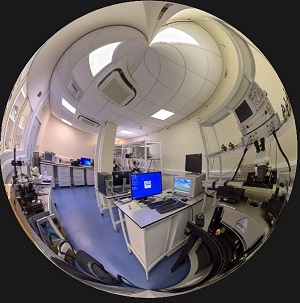
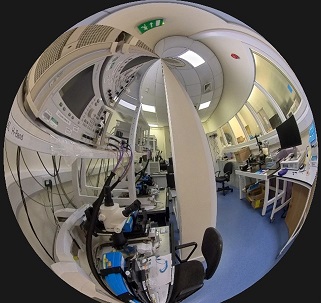
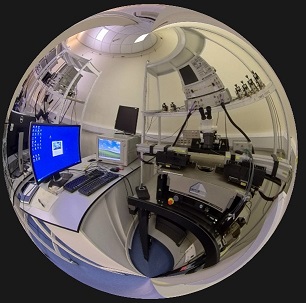
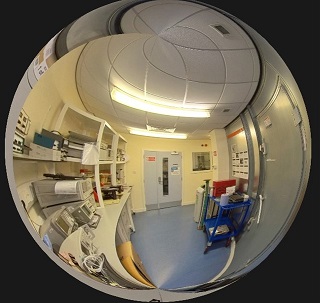
See the technology on which this project was based in action, here:
Links
https://www.gla.ac.uk/schools/engineering/teachinginitiatives/xrcentre/
https://www.gla.ac.uk/schools/engineering/teachinginitiatives/xrcentre/tutorials/


